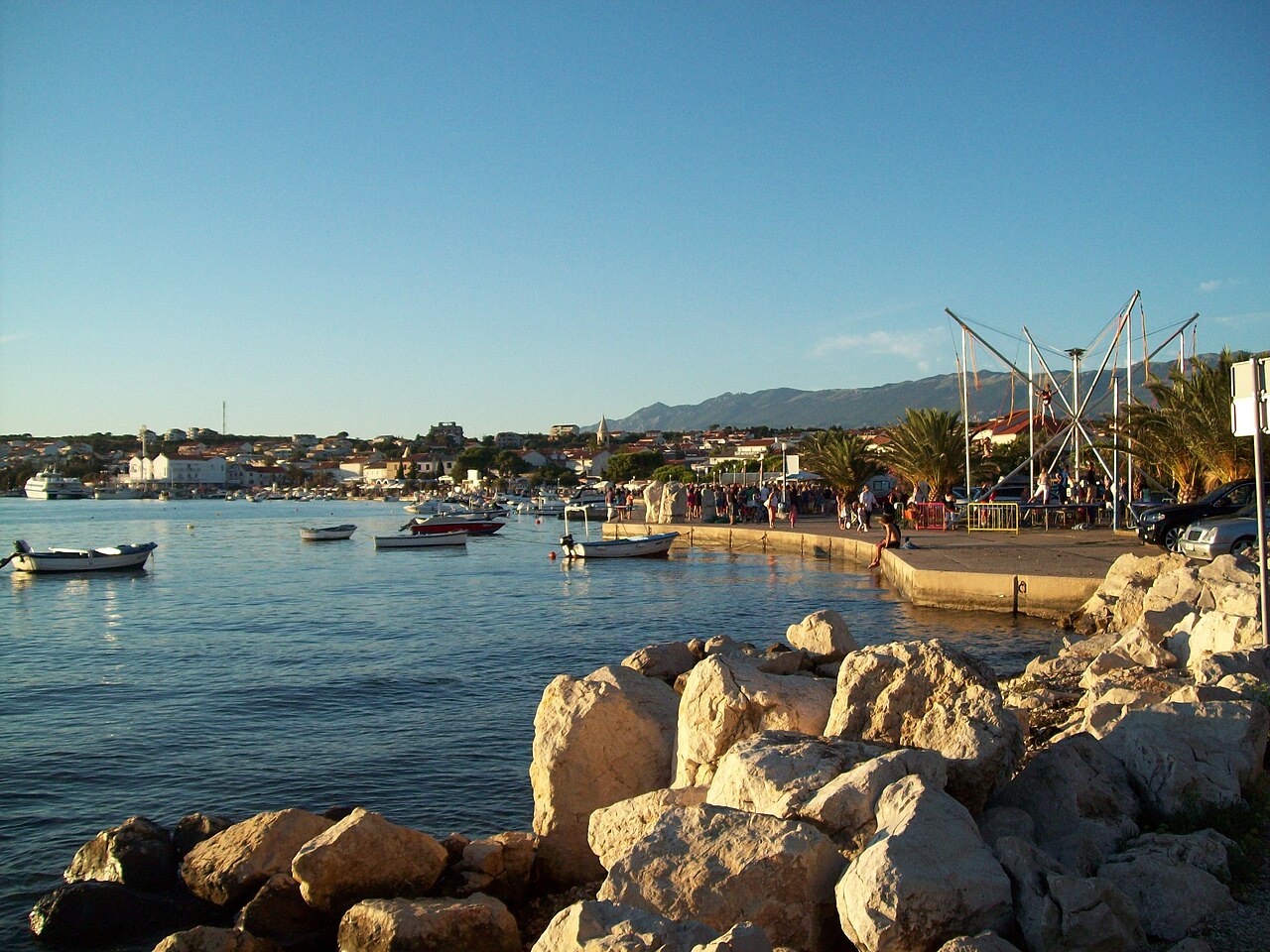Monika A1 and A11 apartments
Apartments are private property of our family. We are living in Zagreb, capital city of Croatia.
First time we have come to Pag as tourists and we have fall in love with this beautiful Island, a specially, village Gajac, which is beautiful and architecturally perfectly organised for best holidays.

Our dream was to become owner of property that we can spent as much time as we can on such beautiful place.
After long search we have become owner of one apartment for our family, than we have become owner of another two which we mostly rent.
As we have fall in love with Gajac, a lot of our guests come back every year and book it for another.

Island of Pag
The population of the island was 9,059. There are two towns on the island, Pag and Novalja, as well as many smaller villages and tourist places.

Pag belongs to the north Dalmatian archipelago and it extends northwest-southeast along the coast, forming the Velebit channel. The island has an area of 284.56 square kilometres (109.87 sq mi) and the coastline is 269.2 kilometres (167.27 mi). It is around 60 kilometres (37 miles) long (from northwest to southeast), and between 2 and 10 kilometres (1.2 and 6.2 miles) wide.

The southwestern coast of the island is low (including the Pag Bay with the large Caska cove), and the northwestern is steep and high (including Stara Novalja Bay). Most of the island is rocky; smaller areas are covered with Mediterranean shrubs. The southeast of the island contains karst lakes Velo Blato and Malo Blato. The island’s highest peak, at 349 metres (1,145 feet),[1] is Sveti Vid (St Vitus).[4]
Most communities on the island are connected by a road. A 300 m (980 ft)-long arch Pag Bridge connects the southern part of the island to the mainland.

The Prizna–Žigljen ferry connects the northern part of the island to the mainland. The island has two towns, Pag and Novalja, and many smaller villages and communities, including Lun, Stara Novalja, Gajac, Kolan, Metajna, Dinjiška, Povljana and others. The island is divided between two counties, with Novalja, Stara Novalja, Lun and Metajna being part of the northern Lika-Senj County, and the remainder of the island south of an isthmus at Gajac, including the town of Pag, being part of the southern Zadar County.

The earliest settlers on the island were an Illyrian tribe that came to the region in the Bronze Age; traces of their settlement can still be seen around Pag. In the 1st century BC, the Romans took possession, and have left numerous archeological and cultural artifacts.
History of Pag
The island was for some time under the rule of the Croatian kingdom. Yet the island was always fought over, and in the 11th and 12th centuries was divided between the communities of Rab (Arbe) and of Zadar (Zara).
From the 12th to 14th centuries, Pag, along with other Dalmatian islands and towns, was fiercely contested between the Republic of Venice and the Croatian-Hungarian rulers. For four centuries from the start of the 15th century, it was held by Venice, until Venice lost its independence in 1797. Austria and France then fought over Dalmatia with victory going to the Austrians.
The island passed from Austria-Hungary to the Kingdom of Yugoslavia after World War I, and then to the Independent State of Croatia (1941–45).
After the Second World War it returned to Yugoslavia and, after the dissolution of Yugoslavia in 1991, the island became part of the Republic of Croatia.



























